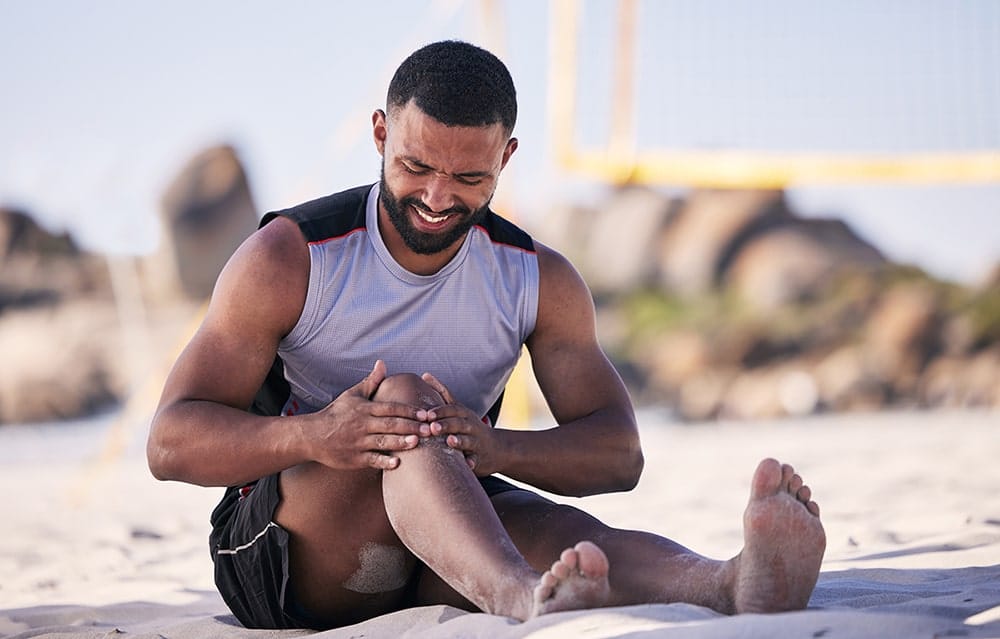(21,000+ reviews on Google across 150+ locations)
Watch as Airrosti’s Ally Jackson, DC explains a few causes and signs of patellar tendonitis. Learn how Airrosti’s method differs from traditional tendonitis treatment. By treating pain directly at the source, Airrosti can help get you back to doing what you love, fast.
The patellar tendon plays a pivotal role in how you use your leg muscles. It helps extend your leg muscles to perform movements like kicking a ball, running uphill, and jumping up in the air. Patellar tendonitis, also known as patellar tendinopathy or jumper’s knee, develops when the tendon that connects the patella (kneecap) to the tibia (shinbone) becomes irritated from overuse.

Patellar tendonitis is frequently seen because of excessive strain placed on the patellar tendon. Continued stress on the knees can cause tiny tears to irritate the tendon. As the tears in the tendon multiply, they cause pain and weakness in the tendon.
This condition is usually seen in athletes who do repetitive jumping, hence the nickname “jumper’s knee.” Patellar tendonitis is frequently observed in sports such as basketball and volleyball. However, it can also affect runners and other athletes.
Other factors that may contribute to developing patellar tendonitis include:
Common symptoms of patellar tendonitis may include:
Knee pain may at first appear only as you begin exercising or after an intense workout. This injury can worsen over time and possibly interfere with your daily activities, such as climbing stairs or squatting.

Without seeking proper treatment, patellar tendonitis can worsen over time. Consult with a healthcare professional about the best treatment options for you.
You may be prescribed over-the-counter pain medications in combination with reducing the amount of physical activity you perform. Your doctor may also recommend you go to physical therapy to help rebuild strength and range of motion through targeted patellar tendon exercises. For more intense or severe cases of patellar tendonitis, you may be recommended to try steroid injections to reduce pain.
Below are a few actions you can take at home to help reduce your risk of developing a knee injury like jumper’s knee:
In rare cases, surgery may be recommended. You should always discuss treatment with a healthcare professional.

If you suffer from patellar tendonitis, Airrosti can help rapidly speed up recovery, allowing you to maintain your active lifestyle while continuing athletic activities.
Through hands-on manual therapy and a personalized rehab plan, Airrosti Providers can help resolve most injuries in an average of three visits (based on patient-reported outcomes). Schedule an appointment with Airrosti and get your body back on track.
Airrosti offers both in-clinic and virtual appointments. For more information, call us at (800) 404-6050.
Read our Medical Disclaimer here.
Reviewed by Casey Crisp, Doctor of Chiropractic
Disclaimer: Always consult with your doctor before starting any exercise program. If you experience any numbness, tingling or reproduction of your symptoms, please contact your doctor.

I tried PT for my patellar tendonitis and achilles tendonitis with minimal improvement. Dr. Pavlich immediately recognized impingement in my hips causing the downstream issues. Within a matter of 2 months of working with Dr. Pavlich, my pain and restrictions are gone. I can't say enough good things about this program. Thanks, again!
by Matt Brown
